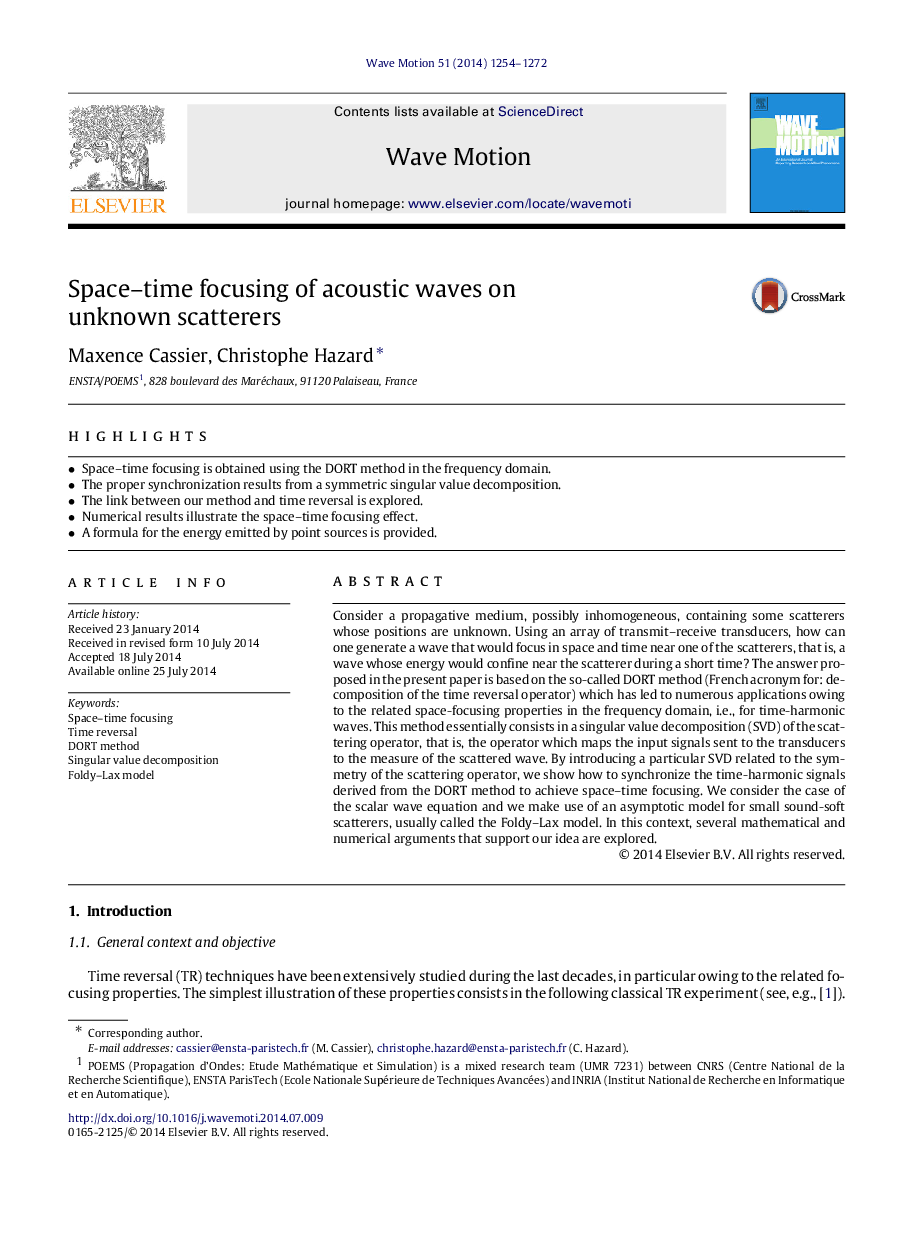| Article ID | Journal | Published Year | Pages | File Type |
|---|---|---|---|---|
| 1900136 | Wave Motion | 2014 | 19 Pages |
•Space–time focusing is obtained using the DORT method in the frequency domain.•The proper synchronization results from a symmetric singular value decomposition.•The link between our method and time reversal is explored.•Numerical results illustrate the space–time focusing effect.•A formula for the energy emitted by point sources is provided.
Consider a propagative medium, possibly inhomogeneous, containing some scatterers whose positions are unknown. Using an array of transmit–receive transducers, how can one generate a wave that would focus in space and time near one of the scatterers, that is, a wave whose energy would confine near the scatterer during a short time? The answer proposed in the present paper is based on the so-called DORT method (French acronym for: decomposition of the time reversal operator) which has led to numerous applications owing to the related space-focusing properties in the frequency domain, i.e., for time-harmonic waves. This method essentially consists in a singular value decomposition (SVD) of the scattering operator, that is, the operator which maps the input signals sent to the transducers to the measure of the scattered wave. By introducing a particular SVD related to the symmetry of the scattering operator, we show how to synchronize the time-harmonic signals derived from the DORT method to achieve space–time focusing. We consider the case of the scalar wave equation and we make use of an asymptotic model for small sound-soft scatterers, usually called the Foldy–Lax model. In this context, several mathematical and numerical arguments that support our idea are explored.
